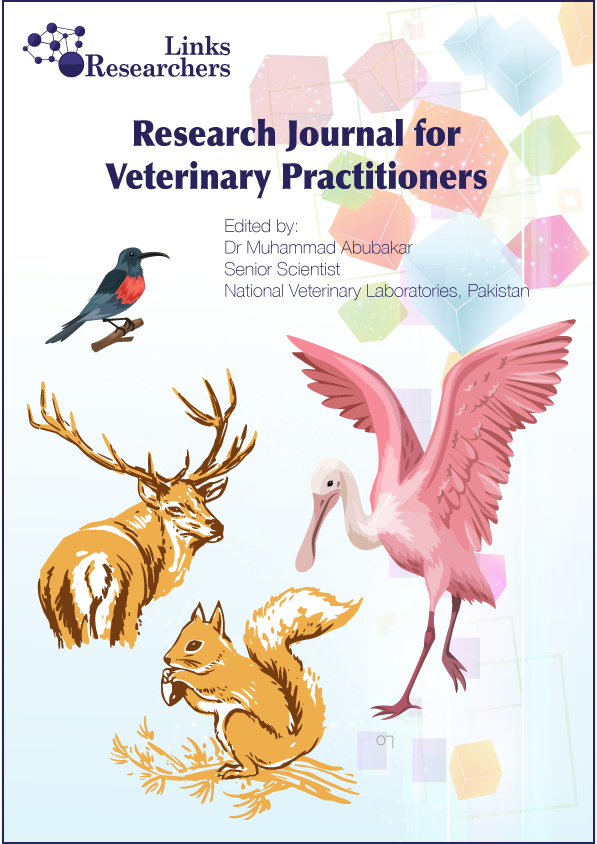Xingdong Yang and Lijuan Yuan
Tayiba Latif Gulraiz1, Arshad Javid1*, Syed Makhdoom Hussain2, Muhammad Shahbaz3, Irfan3 and Sharoon Daud4
Sanaullah Jalil*, Asim Hayat, Abid Majeed, Syed Haider Abbas, Muhammad Noman, Muhammad Imran Kasana and Muhammad Mazhar Hussain
B. Ramanujam, R. D. Prasad, S. Sriram and R. Rangeswaran
Shahida Khalid*and Shahida Nasreen Khokhar*
Zakirullah Jan1, Shamsher Ali1*, Tariq Sultan2, Muhammad Jamal Khan1, Zahir Shah1 and Farmanullah Khan1
Sabi-Ur-Rehman1, Anwar Khalid2, Qazi Najam Us Saqib3, Farooq Ahmad1, Shaheed-Ur-Rehman4, Neelam Zaman3, Ayeza Mehmood5 and Abdul Samad6*
Imran1*, Amanullah1, Muhammad Arif1, Zahir Shah2 and Abdul Bari3
Abid Khan*, Mukhtar Alam and Yousaf Jamal
Anjum and Ahmad Khan*
Samra Aftab1, Saleem Ullah1 and Farida Anjum2*
Izaz Hussain, Ahmad Khan* and Habib Akbar
Huda Bilal1, Hasnain Raza2*, Kaynat Ahmed2, Iqra Tariq2, Qurat-ul-Ain2, Sana Sarfaraz1, Sanaullah1, Maryam Maqsood3 and Ali Raza3
Syeda Shazia Bokhari, Aisha Waheed Qurashi*, Roheela Yasmeen*, Fouzia Yasmeen, Nabeela Nayab, Uzma Rafi
Dewi Ratih Ayu Daning1,2, L.M. Yusiati1, C. Hanim1, B.P. Widyobroto1*
Shang Zhenda1,2*, Kong Qinghui1,4*, Li Jiakui1,4, Liu Suozhu1,2, Tan Zhankun1,2, Shang Peng1,3 and Wang Honghui1,2
Syed Haseeb Ahmed Shah, Irfan Shahzad Sheikh, Abdul Samad, Muhammad Kamran Taj, Mohammad Masood Tariq*, Majed Rafeeq, Sumaira Fazal, Niamatullah Kakar, Sabeera Afzal and Asadullah
Mehwish Saleem Khan* and Sumama Farooq
Ali Ahmad1*, Zubair Aslam1, Korkmaz Bellitürk2, Ehsan Ullah1, Ali Raza1 and Muhammad Asif3
Chooi Lin Phooi1, Elisa Azura Azman1* and Roslan Ismail2,3
Fawziah M. Albarakaty*
Faiq Ahmad1, Shahen Shah1*, Muhammad Amin2, Ikram Ullah3, Sajid Ali4, Maaz Khan1, Muhammad Shakur5 and Sajjad Khan6
Muhammad Shahid Nadeem*, Jalaluddin Azam Khan and Firoz Anwar
HIRA JAVAID*1, MALEEHA MANZOOR2, JAVED IQBAL QAZI3, XIONG XIAOCHAO4 & FOUZIA TABSSUM5
Chun Shi, Juanjuan Guo, Meng Li, Qi Yang and Jingang Li*
Amina Rahat1, Zahin Anjum1*, Sehlina Zehra2, Fatima Umal Baneen3 and Rabia Chishti1
Mehwish Malik1*, Zanib Sadia2, Muhammad Sajid3, Hammidullah1, Yasir Amin1, Zubair Ali1 and Sohail Ahmad1
MALIK ASIF HUSSAIN
Siddique Ahmad1*, Basit Ullah1, Sajid Ali2, Ali Zaid1, Zeeshan Ahmad3, Muhammad Usaid1, Muhammad Zeeshan1 and Saif Ullah3
Phoebe Lyndia Tolentino Llantada1,2*, Midori Umekawa2, Shuichi Karita2
Abdul Haseeb1, Yasir Iftikhar1, Muhammad Ahmad Zeshan1*, Safdar Ali2, Rana Binyamin3, Salman Ghuffar4 and Muhammad Usman Ghani5,6
Kalsoom Abdulrazaq1*, Bisma Arif1, Rimsha Mehboob2, Asma Mehboob3
MUHAMMAD MANSHA1, MAIRA HAFEEZ1, QAMAR ALI1, ABRAR HUSSAIN1, MUHAMMAD TARIQ1 & ATIF YAQUB2
SHEIKH AJAZ RASOOL1, MUHAMMAD SALMAN RASOOL2 & MUNAZZA AJAZ3












